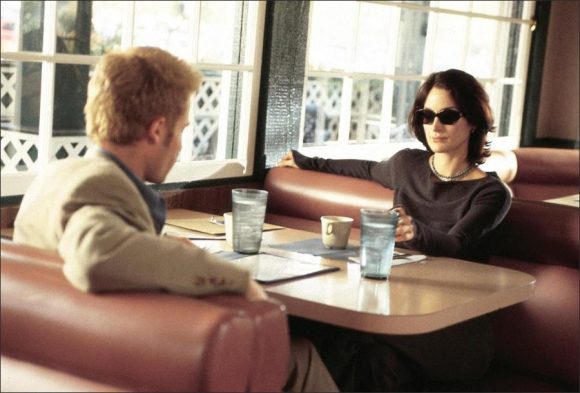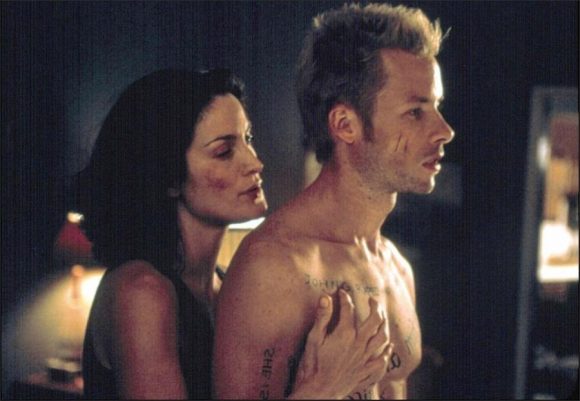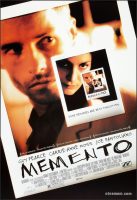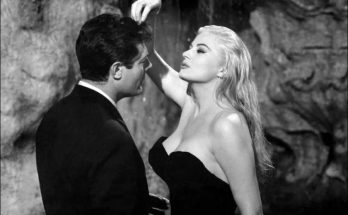Memento, shot by Christopher Nolan on a very low budget in 2000, provides the viewer with a new interpretation of the genre “film noir çıkan that emerged in the 1940s. The script is based on a short story by Memento Mori, written by Nolan’s brother Jonathan.
The main character of the film is Leonard Shelby, a former insurance company employee. Although he struggles to save his wife who was attacked by two unknown people, he cannot succeed. He kills one of the attackers during the incident, but the latter manages to escape from the scene with a heavy blow to the head. Leonard suffered a trauma to his head and suffered anterograde amnesia. In other words, it can no longer create new long-term memories from the time of the accident.
Leonard accurately remembers everything about his pre-accident life, such as who he is, what he does, or when he spends time with his wife. But he doesn’t remember where he was or why he stayed there shortly after he left the hotel. He can’t trust anyone because he can’t remember a few minutes after he met. Despite this paranoid situation, the only thing he is sure of is that he wants to avenge his murdered wife in order to do justice.
Because of his memory, Leonard develops several methods to find the killer. First of all, he takes a picture of everything and each person and writes a note that he should not forget about him and carries it in his pocket. It records the information that it deems very important to the body by having tattoos. Based on a file of the police investigation on the death of his wife, he prepares a map showing the relations between people and places. He tries to explain these relationships by marking certain points on the map with various photographs and notes. The characters Natalie and Teddy, who do not inspire much confidence but seem to know more about the event, help Leonard to establish these relationships (right or wrong).
Although we depict it flat, the most important feature of the film is undoubtedly that it has a highly fragmented and non-linear narrative structure. Nolan does this perfectly with the black-and-white and color frames he uses in the film and the intertwined patterns of time that flow both forward and backward. Another feature of the narrative in Reason Book is that the objectivity that the viewer possesses by nature is successfully overcome by the plot and camera angle transmitted through colored frames.
The black-and-white scenes depicting Leonard, who sits in the hotel room and tells the story of Sammy Jankins on the phone, allow the viewer to evaluate the event from a third-person point of view, providing a framework to help understand what events actually take place in complex frames. In the backward colored frames, the viewer cannot make any choice except for being positioned next to Leonard due to the camera angle, and cannot preserve the objective point of view in black and white scenes and tries to solve what is going on with the main character.

Therefore, Nolan gives the audience the right to watch in only half of the film, which he designed in black and white and 22 frames each, forcing him to walk / act together with the main character and remove him from the objectivity of the audience position and transform him into a person who experiences the subjectivity of Leonard. Thus, the director allows the audience to share the lığı being Leonard ”, that is, the experience of not being able to memorize what has happened for more than a few minutes, as well as the confusion as he struggles to form a coherent narrative of all the events he encounters.
Reality and Self Perception
The most striking aspect of the Book of Reason for the viewer is that it refers to many philosophical debates about memory, time, reality and self. Leonard is unable to establish a new memory as a result of the trauma he is experiencing. Since the sense of time and space is limited to the extent allowed by his memory, he is doomed to live without a sense of reality and self. In such a situation in which memory cannot be established and the continuity of time and space is repeated by breaking itself, the ground for the construction of the self and therefore the world is lost.
In order to make the matter a little more understandable, we can address the question of personal identity. Because the problem of personal identity is at the center of the philosophical debate about self. As a philosophical problem, we can simply express personal identity as follows: How can I know that I am the same person through the changes in time, having a presence in time?
For this, there must be something that does not change, or we must have some criteria that make such information possible. The seventeenth-century English philosopher John Locke argues that this basic criterion that ensures the identity and continuity of a person over time is “memory.. According to Locke, as we have seen in Leonard’s case, bodily continuity cannot be the guarantee of personal identity: I can only have a sense of self if I can remember that I existed in the past.

The establishment of the world as a realm of reality is also dependent on the existence of memory. However, the memory opens up a “place“ in which one can act freely and be held accountable for his actions. An infinite now also makes discussion of the responsibility a person will carry in his actions, since he limits the world of conscious experience with temporal continuity (at least to some level of conscious animals).
Well, can we trust the memory that is so important to a human being? Maybe it will be a paradox but no. Because memory, as we heard from Leonard’s language at the beginning of the film, is not a perfect record but an interpretation. Therefore, it can be easily distorted. In order to point to this unreliable character of memory, the director corrects the mistake of the car plate, which Leonard notes with a tattoo, in a scene at the end of the film. Thus, he wants to show that the reality of a phenomenon and the information of that phenomenon recorded through memory may not be consistent. Nolan reminds the audience of the fragile texture of self and reality through a perfect fiction and cinema technique through the Memento.
Memento (2000)
Directed by: Christopher Nolan
Starring: Guy Pearce, Carrie-Anne Moss, Joe Pantoliano, Stephen Tobolowsky, Jorja Fox, Harriet Sansom Harris, Callum Keith Rennie, Larry Holden, Marianne Muellerleile
Screenplay by: Christopher Nolan
Production Design by: Patti Podesta
Cinematography by: Wally Pfister
Film Editing by: Dody Dorn
Costume Design by: Cindy Evans
Set Decoration by: Danielle Berman
Music by: David Julyan
MPAA Rating: R for violence, language and some drug content.
Senaryo: Christopher Nolan, Jonathan Nolan
Distributed by: Newmarket Films
Release Date: March 16, 2001
Visits: 150





